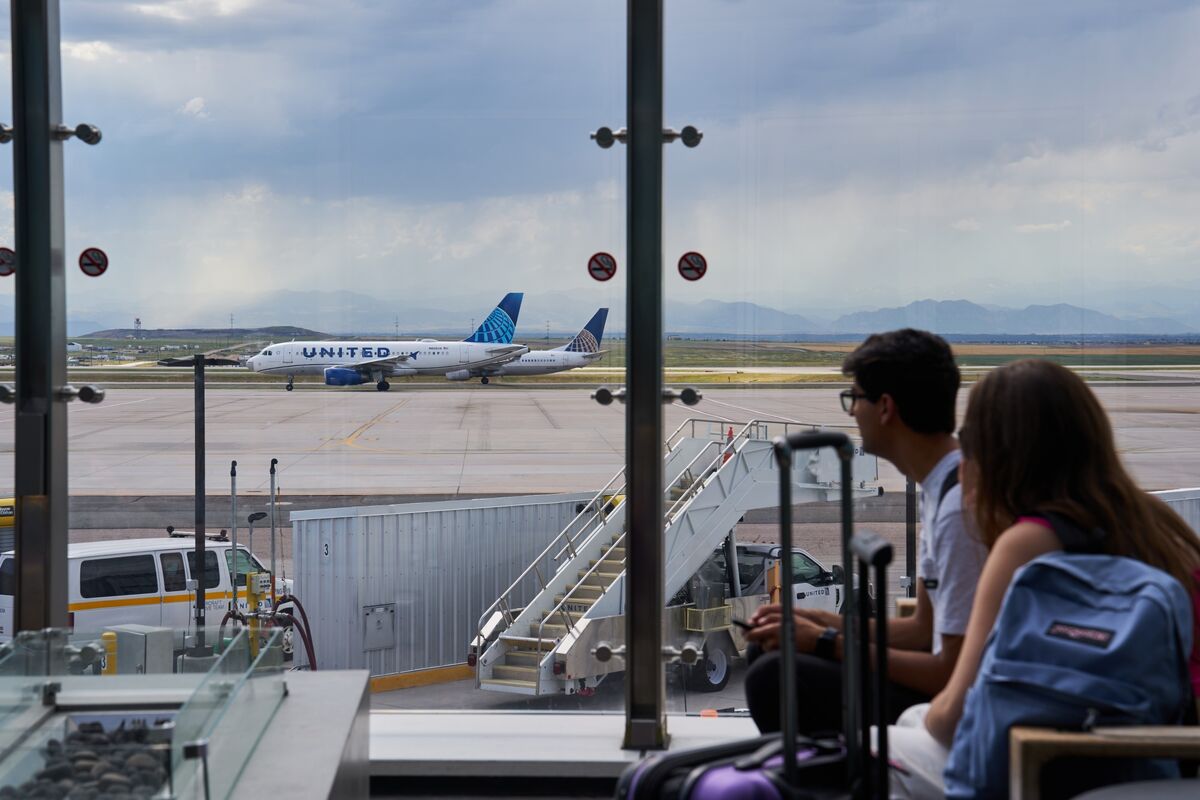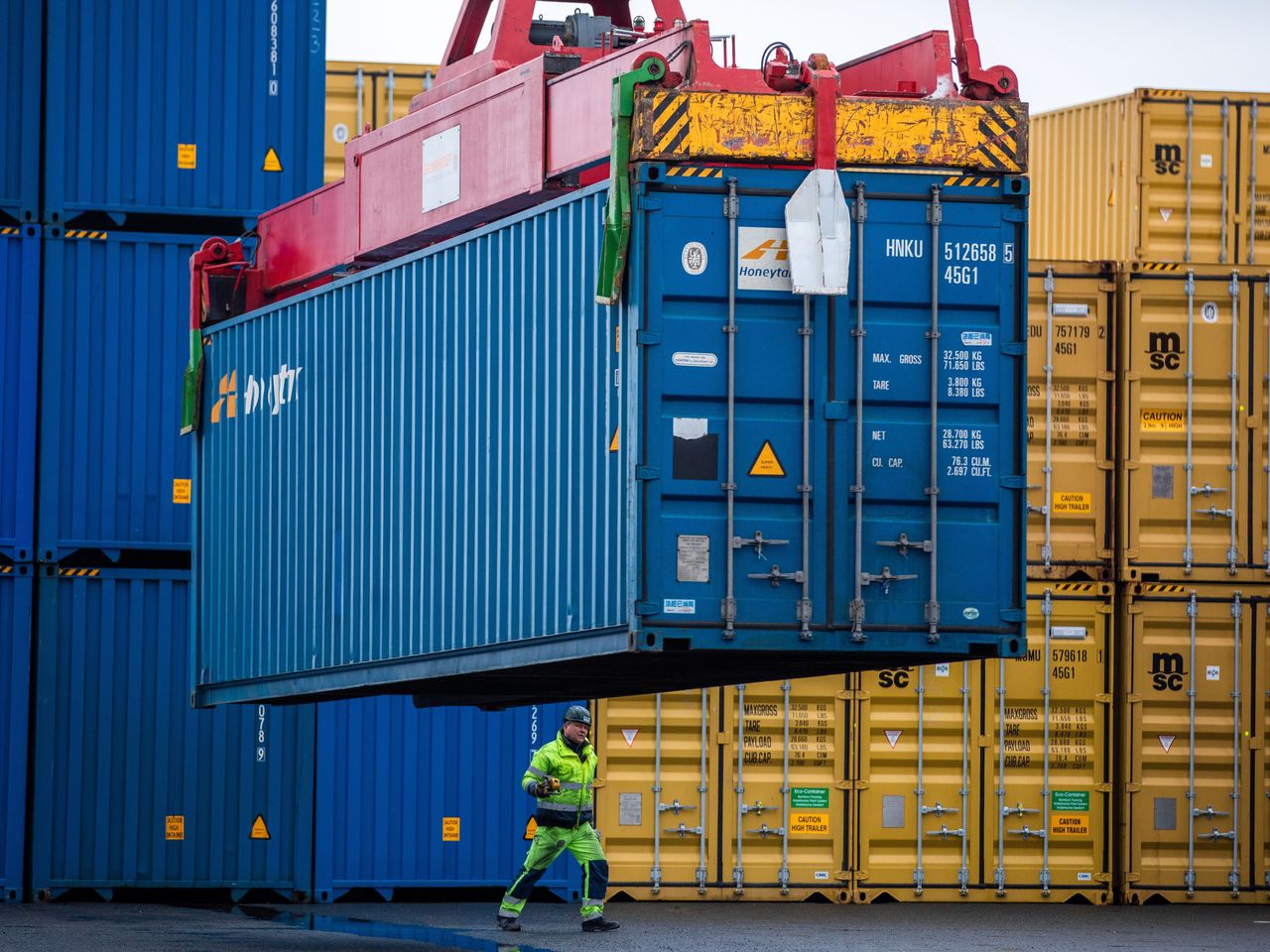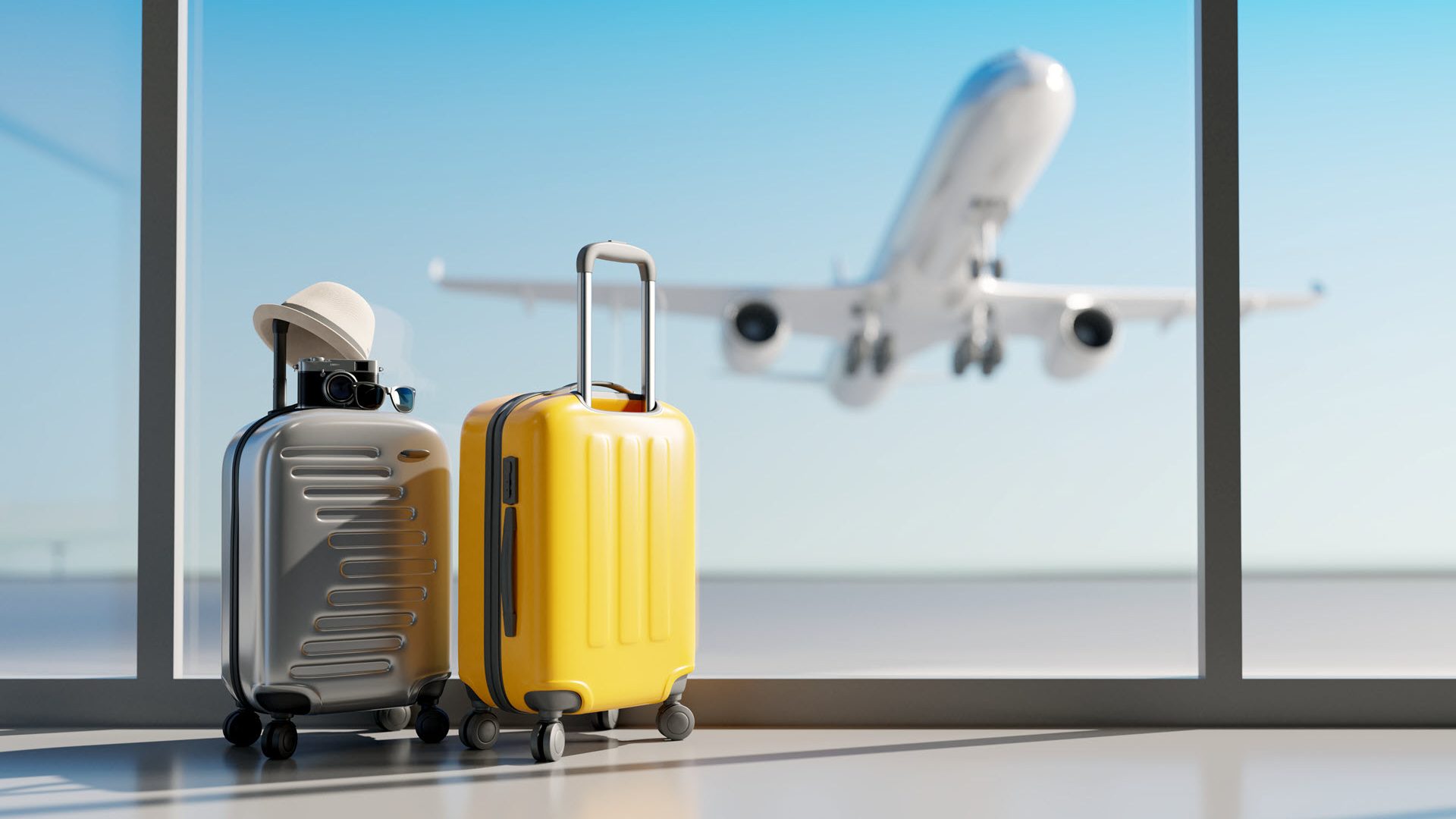

Finance
Why Are Airline Stocks Down
Published: January 19, 2024
Discover the reasons behind the recent decline in airline stocks and how it impacts the finance industry. Stay informed with our comprehensive analysis.
(Many of the links in this article redirect to a specific reviewed product. Your purchase of these products through affiliate links helps to generate commission for LiveWell, at no extra cost. Learn more)
Table of Contents
Introduction
The airline industry has been severely impacted by the global COVID-19 pandemic, with airlines experiencing significant declines in their stock values. The unprecedented crisis has led to a sharp decrease in travel demand along with a series of travel restrictions and border closures imposed by governments worldwide. As a result, airlines have faced substantial financial challenges and have had to make difficult decisions, such as reducing flight capacity and laying off employees.
The drastic drop in airline stocks has been a cause of concern for investors and industry experts. Understanding the factors contributing to this decline is crucial for analyzing the current state of the airline industry and projecting its future outlook.
In this article, we will explore the reasons behind the decline in airline stocks, focusing on the impact of COVID-19 on the industry, the decline in travel demand, travel restrictions and border closures, financial challenges faced by airlines, reductions in flight capacity, and government support.
By examining these factors comprehensively, we aim to provide insights into the current challenges faced by the airline industry and shed light on what the future may hold for this essential sector of the global economy.
Impact of COVID-19 on the Airline Industry
The outbreak of the COVID-19 pandemic has had a profound and lasting impact on the airline industry. The virus rapidly spread across the globe, resulting in a significant decline in air travel and creating unprecedented challenges for airlines.
One of the primary factors contributing to the decline in airline stocks is the sharp decrease in travel demand. As countries implemented strict lockdown measures and individuals practiced social distancing to prevent the spread of the virus, people’s willingness and ability to travel diminished significantly. Business trips, vacations, and even essential travel were put on hold, leading to a virtual standstill of the airline industry.
Furthermore, travel restrictions and border closures imposed by governments added to the woes of the airline industry. In an effort to contain the virus, many countries implemented strict travel restrictions, including quarantine requirements, flight cancellations, and border closures. These measures severely impacted airlines’ ability to operate and disrupted travel planning for both domestic and international routes.
The financial challenges faced by airlines have been another critical aspect contributing to the decline in airline stocks. With drastically reduced revenues and ongoing operational costs, airlines have been struggling to stay afloat. Fixed expenses, such as aircraft leases and loan repayments, have remained high, despite a significant drop in revenue. This financial strain has put immense pressure on airlines, leading to bankruptcies, mergers, and the need for government assistance.
In response to the crisis, airlines have had to make tough decisions to survive. One of the measures taken was the reduction in flight capacity. Airlines have grounded a significant percentage of their fleets, canceled routes, and reduced the frequency of flights. This capacity reduction not only reflects the decline in demand but also helps airlines manage their costs. However, this reduction in operations has further impacted airline revenues and contributed to the decline in stock values.
Despite the challenges, governments around the world have stepped in to provide aid and support to the airline industry. Various economic stimulus packages and financial relief measures have been implemented to ensure the survival of airlines. These support measures include grants, loans, and tax relief, aimed at stabilizing the industry and safeguarding employment.
The full impact of the COVID-19 pandemic on the airline industry is yet to be determined. The recovery and resurgence of the industry largely depend on the successful development and distribution of effective vaccines, easing travel restrictions, and restoring passenger confidence. In the meantime, airlines will continue to face uncertainty and challenges as they navigate through this unprecedented crisis.
Decline in Travel Demand
One of the key factors contributing to the decline in airline stocks is the significant decrease in travel demand. The COVID-19 pandemic has led to a fundamental shift in consumer behavior and attitudes towards air travel. As countries implemented lockdown measures and imposed travel restrictions, people’s willingness and ability to travel plummeted.
The fear of contracting the virus and the uncertainty surrounding travel safety have dissuaded individuals from embarking on non-essential trips. Business travel, which was a major revenue source for airlines, has also been severely impacted as companies implemented remote working policies and virtual meetings became the norm. With conferences, trade shows, and events being canceled or postponed, the need for business travel significantly diminished.
The decline in travel demand has been most pronounced in international travel. As governments imposed strict entry restrictions, mandatory quarantine measures, and border closures, international travel virtually came to a halt. Leisure travel, which heavily relied on international destinations, experienced a steep decline as individuals were unable or unwilling to travel abroad.
Even domestic travel, which initially showed some signs of recovery as restrictions eased, has been affected. The fear of potential outbreaks and the uncertainty surrounding travel restrictions have made individuals cautious about domestic travel as well.
The decrease in travel demand has resulted in a significant decrease in passenger load factors for airlines. In an attempt to fill their aircraft and generate revenue, airlines have been forced to reduce airfares, leading to lower profit margins and financial losses. Moreover, the reduced demand has made it difficult for airlines to operate profitably, as the costs of fuel, maintenance, and crew remain relatively fixed.
As the pandemic continues and uncertainty lingers, it is expected that travel demand will remain subdued in the short term. The recovery of the airline industry and a resurgence in travel demand will largely depend on the successful control of the virus, widespread vaccinations, and the restoration of consumer confidence in air travel.
Travel Restrictions and Border Closures
One of the significant challenges faced by the airline industry during the COVID-19 pandemic is the imposition of travel restrictions and border closures by governments around the world. These measures were put in place to control the spread of the virus and protect public health but have had a profound impact on the industry.
Travel restrictions have been implemented to varying degrees, including limitations on entry and exit, mandatory quarantine periods, and the requirement of negative COVID-19 test results. Governments have also imposed restrictions on the types of travelers allowed, prioritizing essential travel and repatriation flights while restricting non-essential travel.
Border closures have been a key element of travel restrictions, with countries imposing strict controls on international travel. This has led to a significant reduction in international travel demand, affecting both leisure and business travel. International flights have been canceled or limited, and passengers have been required to provide proof of valid reasons for travel in order to be allowed entry.
These travel restrictions and border closures have disrupted travel itineraries, impacted travel planning, and caused uncertainty for both airlines and travelers. Airlines have had to deal with a high number of cancellations and rebookings, as well as the logistical challenges of navigating through a rapidly changing landscape of travel rules and regulations.
Furthermore, the inconsistency and variability of travel restrictions between countries have added complexity to the industry’s recovery. Airline networks and routes have had to be reevaluated and adjusted constantly, as restrictions can differ significantly from one destination to another.
The impact of these travel restrictions goes beyond just the airlines. The entire travel and tourism industry, including hotels, restaurants, and tourist attractions, has been severely affected. The decline in international tourists and business travelers has led to a significant loss of revenue and has caused layoffs and closures within the tourism sector.
As the pandemic evolves and the global situation changes, governments are gradually adjusting their travel restrictions and border policies. Some countries have started implementing travel bubbles or corridors, allowing restricted travel between specific destinations with low COVID-19 transmission rates. These efforts aim to revive tourism while ensuring proper health and safety protocols.
However, it is important to note that the lifting of travel restrictions and border closures will depend on the successful control of the virus, the availability of effective vaccines, and the cooperation between countries to establish international travel protocols that prioritize safety and prevent the resurgence of the virus.
Financial Challenges Faced by Airlines
The airline industry has been grappling with significant financial challenges resulting from the COVID-19 pandemic. The sharp decline in travel demand and the ongoing operational costs have put immense pressure on the financial stability of airlines.
One of the primary financial challenges is the drastic reduction in revenue. As travel demand plummeted, airlines experienced a significant drop in ticket sales and ancillary revenue streams. With flights operating at reduced capacity to adhere to social distancing measures and travel restrictions, airlines struggled to generate sufficient revenue to cover their operating expenses.
Fixed expenses, such as aircraft leases, loan repayments, and maintenance costs, have remained a burden for airlines. These fixed costs represent a significant proportion of airlines’ expenses and are challenging to mitigate during periods of low demand. Additionally, airlines have had to incur additional expenses related to implementing health and safety measures, such as increased cleaning protocols and COVID-19 testing for employees and passengers.
Furthermore, airlines have been faced with the challenge of managing their cash flow. With limited liquidity and a decline in revenue, airlines have had to carefully manage their financial resources to meet ongoing operational costs and debt obligations. This has meant making difficult decisions, such as reducing investments in fleet expansion, deferring aircraft deliveries, and negotiating with creditors to secure financial flexibility.
To alleviate their financial strain, airlines have taken measures to conserve cash and reduce costs. These measures have included grounding a significant portion of their fleet, canceling or consolidating routes, and implementing cost-cutting measures across various departments. Unfortunately, these cost-saving measures have often involved layoffs, furloughs, and pay cuts for employees, further exacerbating the economic impact of the crisis.
Airlines have also sought financial support from governments and financial institutions to bolster their liquidity and provide a lifeline during this challenging period. Governments have implemented various support measures, including direct financial aid, loans, and loan guarantees, to help airlines weather the storm. However, the level of government support varies across countries and airlines, and the long-term financial sustainability of the industry remains uncertain.
As the industry gradually recovers and travel demand returns, airlines will still face ongoing financial challenges. Recovery in the airline industry is anticipated to be gradual, with revenues taking time to rebound to pre-pandemic levels. The continued success of airlines will depend on their ability to adapt to evolving market demands, control costs, and implement sustainable business strategies.
Reduction in Flight Capacity and Layoffs
The COVID-19 pandemic has led to a significant reduction in flight capacity as airlines grapple with a sharp decline in travel demand. To align with the reduced demand and comply with travel restrictions, airlines have been forced to make difficult decisions, including reducing flight frequency, canceling routes, and grounding a substantial portion of their fleet.
Reducing flight capacity has been a necessary step for airlines to manage their operational costs during this unprecedented crisis. Operating flights with low passenger numbers is financially unsustainable, as the cost of operating the aircraft remains relatively fixed. By reducing the number of flights, airlines can optimize their operational efficiency and conserve resources.
The reduction in flight capacity has also been driven by travel restrictions and border closures imposed by governments. These restrictions have limited the ability of airlines to operate certain routes, especially international ones. Airlines have had to navigate through a complex web of travel rules and regulations, leading to further reductions in flight schedules.
Unfortunately, the reduction in flight capacity has also resulted in significant layoffs and furloughs within the airline industry. As airlines grappled with the financial challenges posed by the pandemic, they had to make difficult decisions to cut costs, including reducing their workforce. Many airlines were forced to lay off or furlough employees to align with the reduced flight operations.
The layoffs have affected various departments within the airlines, including pilots, flight attendants, ground staff, and administrative personnel. These job cuts have had a profound impact on the livelihoods of the affected employees and their families, as well as the overall economy.
To mitigate the impact of layoffs, some airlines have offered voluntary retirement programs, early retirement incentives, and temporary leaves of absence. Additionally, governments in some countries have implemented job protection schemes and financial aid programs to support laid-off airline workers.
The reduction in flight capacity and the resulting layoffs have added to the financial challenges faced by the airline industry. Airlines are striving to strike a balance between aligning their operations with travel demand and maintaining a viable workforce for when travel demand eventually rebounds.
As the industry slowly recovers and travel demand starts to pick up, airlines will gradually increase their flight capacity and reinstate routes. However, the recovery process is expected to be gradual and will heavily depend on the successful control of the pandemic, the lifting of travel restrictions, and the restoration of consumer confidence in air travel.
Government Aid and Support
The airline industry has received significant government aid and support during the COVID-19 pandemic. Recognizing the vital role of airlines in the global economy and the severe financial challenges they face, governments around the world have implemented various measures to provide assistance to the industry.
One of the key forms of government support has been direct financial aid. Governments have allocated funds to help airlines cover their immediate expenses, such as payroll, rental payments, and operational costs. This financial aid has provided a lifeline for airlines, allowing them to continue their operations and retain employees during this difficult time.
In addition to direct financial aid, governments have offered loans and loan guarantees to airlines. These loans have provided liquidity and financial flexibility to airlines, enabling them to meet their ongoing financial obligations and weather the storm of the pandemic. Governments have often worked closely with financial institutions to facilitate these loans and ensure that airlines can access the necessary capital.
Tax relief and deferrals have also been implemented as part of the government support measures. Airlines have been granted temporary waivers or reductions in various taxes and fees, such as fuel taxes, airport charges, and air navigation fees. These tax incentives have helped ease the financial burden on airlines and improve their cash flow.
Furthermore, some governments have implemented job protection schemes and wage subsidy programs to support employees in the airline industry. These programs aim to prevent or minimize job losses, provide income support, and maintain the expertise within the industry. By supporting the airline workforce, governments aim to ensure the industry’s quick recovery once travel demand returns.
The extent and nature of government support vary across countries and regions. Some countries have implemented comprehensive aid packages for the entire aviation sector, while others have focused primarily on the national carriers. The level of government support has also been influenced by factors such as the financial health of airlines, the strategic importance of the aviation sector, and the country’s economic priorities.
While government aid has been crucial for the survival of many airlines, concerns have been raised about the long-term implications. Some argue that the aid received by airlines may lead to a distortion of competition, as state-supported airlines potentially gain an advantage over their competitors. The challenge for governments will be to strike a balance between providing necessary support and ensuring a level playing field within the industry.
As the pandemic continues and the travel industry slowly recovers, government support will play a crucial role in the sustainable recovery of the airline industry. Continued collaboration between governments and airlines will be essential to navigate the challenges ahead and build a stronger and more resilient aviation sector for the future.
Future Outlook for the Airline Industry
The future outlook for the airline industry remains uncertain as it continues to grapple with the unprecedented challenges caused by the COVID-19 pandemic. While the gradual rollout of vaccines brings hope for a recovery, several factors will shape the industry’s trajectory in the coming months and years.
The successful distribution and adoption of vaccines will play a vital role in restoring confidence in air travel. As more people receive vaccinations, the fear and uncertainty surrounding the virus are expected to diminish, leading to an increase in travel demand. However, it may take some time for vaccination efforts to reach a critical mass, and the pace of recovery will vary across different regions of the world.
Travel restrictions and border closures will also greatly impact the industry’s recovery. Governments will need to strike a delicate balance between maintaining necessary safety measures to prevent the spread of the virus and gradually easing travel restrictions to revive the aviation sector. The establishment of travel bubbles or corridors between countries with low transmission rates can help facilitate a gradual return to international travel.
Changing traveler preferences and behaviors are expected to shape the future of air travel as well. Travelers may prioritize health and safety considerations when choosing airlines, airports, and destinations. Airlines will need to continue implementing robust health and safety measures to instill confidence and meet the evolving expectations of passengers.
Technological advancements and innovations will also play a significant role in shaping the future of the industry. Airlines will continue to invest in touchless technologies, enhanced sanitation protocols, and improved air filtration systems to ensure a safe and seamless travel experience. Digital transformation and the adoption of contactless processes will become the new norm, from mobile check-ins to digital health passports.
Furthermore, airlines will need to adapt their business models and strategies to the post-pandemic landscape. This may involve reducing reliance on business travel and exploring new revenue streams, such as cargo operations and partnerships with other sectors like e-commerce. Airlines will also need to strike a balance between cost-cutting measures and investment in sustainability initiatives to align with evolving consumer expectations and global environmental goals.
The recovery of the airline industry is expected to be gradual and uneven across different geographical regions and market segments. Full recovery to pre-pandemic levels may take several years, with airlines gradually rebuilding their networks and restoring flight capacity as travel demand returns. Consolidation within the industry, through mergers, acquisitions, and collaborations, may also occur as airlines seek to streamline operations and strengthen their financial stability.
Ultimately, the long-term outlook for the airline industry will depend on the global containment of the virus, effective vaccination programs, and the restoration of consumer confidence in air travel. With nimble adaptation, innovative strategies, and coordinated efforts between industry stakeholders and governments, the airline industry can emerge from this crisis and shape a resilient and sustainable future.
Conclusion
The COVID-19 pandemic has had a profound impact on the airline industry, leading to a significant decline in stock values and posing numerous challenges for airlines worldwide. The industry has faced a steep decline in travel demand, driven by travel restrictions, border closures, and individuals’ reluctance to travel due to safety concerns. These factors have resulted in substantial financial challenges for airlines, who are grappling with reduced revenue, fixed expenses, and the need to manage their cash flow.
The reduction in flight capacity and the subsequent layoffs have further compounded the industry’s woes, affecting both operations and the livelihoods of employees. However, governments have stepped in with various forms of support, including financial aid, loans, and tax relief, to assist airlines during these difficult times.
Looking ahead, the industry’s future outlook remains uncertain. The successful distribution and adoption of vaccines, the gradual easing of travel restrictions, and the restoration of consumer confidence will play crucial roles in the industry’s recovery. Airlines will need to adapt to changing traveler preferences, prioritize health and safety measures, and embrace technological innovations to rebuild trust and ensure a safe travel experience.
The road to recovery for the airline industry will be long and challenging. It will require collaboration between governments, airlines, and industry stakeholders to navigate the evolving landscape and rebuild a resilient and sustainable aviation sector. With strategic planning, innovation, and a relentless commitment to customer safety and satisfaction, the airline industry can emerge stronger from this unprecedented crisis and regain its position as a vital driver of global connectivity and economic growth.














